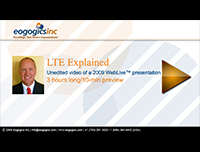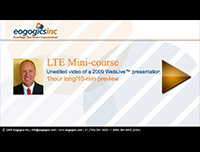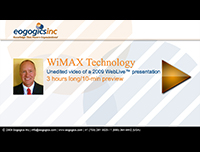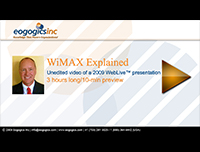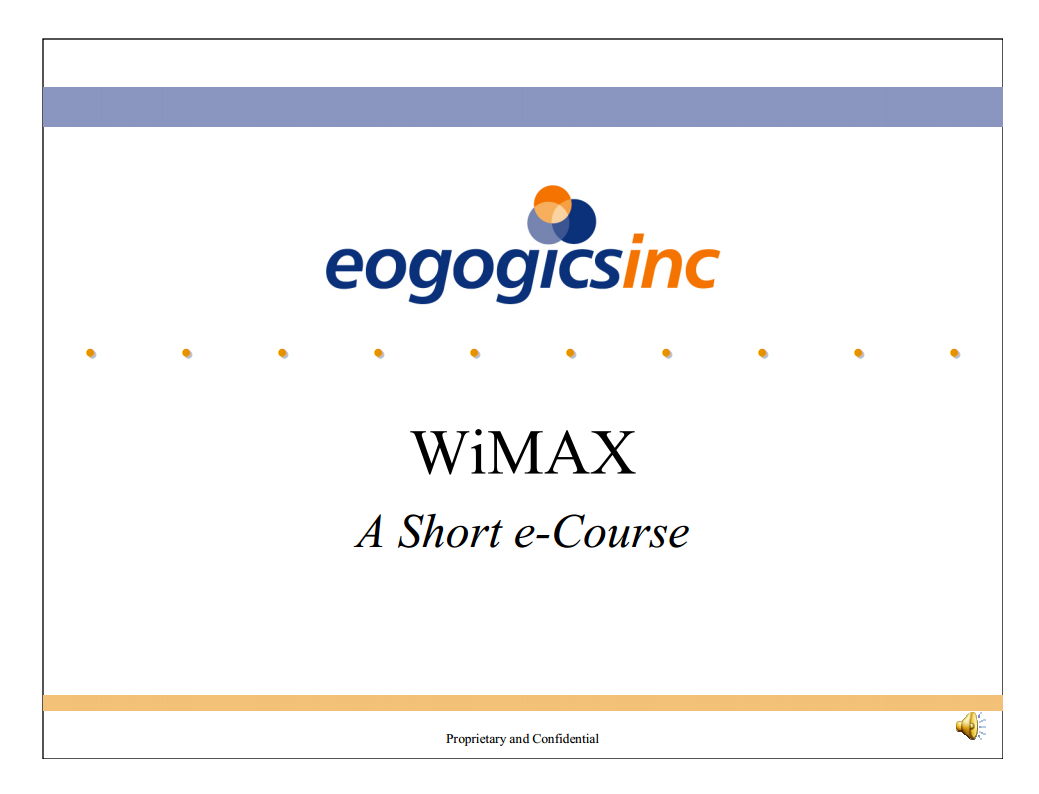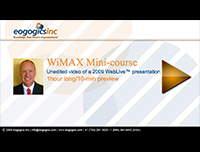Knowledge Center
Wireless and RF Communications
LTE and 5G
Distributed Computing for IoT: Data Management in a Fog Computing Environment
Mobile cellular operators are making plans for Mobile Edge Computing (MEC), which enables Cloud computing capabilities and an IT service environment at the edge of the cellular network. It is a concept developed by ETSI (European Telecommunications Standards Institute) that aims to bring computational power into Mobile RAN (radio access network) to promote virtualization of software at the radio edge. MEC brings virtualized applications much closer to mobile users ensuring network flexibility, economy and scalability for improved user experience.
Related Courses :
- Onsite Training: Emerging Technologies, SDN, NFV, Cloud, Blockchain and General Networking
- Onsite Training: 5G Wireless, M2M, IoT, SDN, NFV, Cloud
- Onsite Training: Defense, Security, Public Safety
- Onsite Training: IoT, IPv6, VoIP, EoIP, IMS, MPLS, SNMP
- Onsite Training: M2M, WiFi, Bluetooth, Zig Bee, IoT
Check out our courses on 5G Wireless technologies, applications, and marketplace along with related courses on M2M and IoT.
LTE Advanced: A Quick Look at Releases 10 to 12
Emerging trends such as social networking, cloud computing and storage, and video sharing, together with mobile computing will continue to put an enormous pressure on the cellular infrastructure. It is anticipated that at least a 30 fold increase in capacity, as well as additional services that will enhance the user experience, are required to make it all work. The LTE-A advanced project was initiated to meet this increasing traffic demand.
Related Courses :
The Eogogics LTE Curriculum …
… includes two dozen courses covering such topics as LTE Advanced/LTE RAN and Core, Design and Optimization, LTE Evolution to 5G, VoLTE, LTE-IMS Inter-work, LTE for Public Safety, and much more.
e-Learning Course – LTE Technology: For Technical Audiences (6 hours long)
This is a web-based video recording of the 6-hour long course webcast live on Dec. 10-11, 2009. It’s aimed at technical audience involved in the design and deployment of LTE networks, equipment, or software.
e-Learning Course – LTE Explained: For All Audiences (3 hours long)
This is a web-based video recording of the 3-hour long course webcast live on Nov. 4, 2009. It is aimed at the non-engineers involved in business planning and forecasting, policy making and regulation, marketing and sales, management, and procurement for the advanced 4th generation wireless networks.
Related Courses :
e-Learning Course – LTE Mini-course for All Audiences (1 hour long)
This is a web-based video recording of the 1-hour long course webcast live on Oct 23, 2009. It’s aimed at all who need a quick, non-technical introduction to LTE.
Spot Light on LTE Curriculum
Given the number of queries we get daily on LTE, I thought it’d be good to summarize what we’ve got, and it’s a lot: 20+ courses available for private classes (at your offices or WebLive™) and a growing e-learning collection open to individuals.
4G LTE: Or The Dawn of Quadruple Play Services
Providing voice, Internet, and content/video to subscribers on the move without the need for a cable to access the network has been a major ambition of most telecom operators. Quadruple play is the marketing buzzword for a service that combines the triple play of broadband Internet, television, and telephone with the mobility afforded by wireless.
4G, OFDM/MIMO
e-Learning – 4G Technologies & Services: For All Audiences (3 hours long)
This is a web-based video recording of the 3-hour long course webcast live on Oct. 21, 2009. It is aimed at all audiences new to 4G, nontechnical or nontechnical, who wish to learn what 4G is all about.
Related Courses :
4G and NGN: It’s Déjà Vu All over Again. Again. And Maybe Even Again!
Baseball player, coach, and legend, Yogi Berra, is famous for a long list of twisted phrases that have become known as Berra-isms. One of those special plays on words is “it’s déjà vu all over again”. Anyone who has been in the computer and telecommunications industry long enough is probably experiencing déjà vu all over again and maybe even again and again.
Related Courses :
e-Learning – 4G Enablers: OFDM and MIMO for Technical Audiences (3 hours long)
This is a web-based video recording of the 3-hour long course webcast live on Dec. 9, 2009. It is aimed at technically savvy audiences with prior exposure to UMTS and HSPA technologies.
Related Courses :
I Want My 4G Now: LTE vs. WiMAX. Not!
If one listens to industry analysts, it would seem the discussion on 4G is entirely about LTE vs. WiMAX. If only it were that simple. In going through the bill of materials for a 4G network, there is a very long way to go before reaching a decision of LTE vs. WiMAX.
Related Courses :
New e-Learning Courses on 4G, LTE, WiMAX, OFDM, MIMO, NextGen (NGN), IPTV, MPLS
We’ve just released a series of click-and-play (self-study) courses on such hot telecom topics as 4G, LTE, WiMAX, OFDM/MIMO, NextGen Technologies, IPTV, and MPLS. Being recordings of WebLive™ courses recently taught live on the Web, they combine lecture with class discussion, both verbal and text chat. So they convey the excitement and interactivity of a live class.
Related Courses :
Tutorial – 4G Wireless Technologies
4G, short for fourth-generation wireless communication systems, has engaged the attention of wireless operators, equipment makers (OEMs), investors, and industry watchers around the world. 4G refers to the next generation of wireless technology that promises higher data rates and expanded multimedia services.
Related Courses :
WiMAX
e-Learning – WiMAX Technology for Technical Audiences (6 hours long)
This is a web-based video recording of the 6-hour long course webcast live on Oct 28-29, 2009. It is aimed at technical audience involved in the design and deployment of WiMAX networks, equipment, or software.
Related Courses :
e-Learning – WiMAX Explained for All Audiences (3 hours long)
This is a web-based video recording of the 3-hour long course webcast live on Oct 22, 2009. It is aimed at the busy executives and non-engineers involved in business planning and forecasting, policy making and regulation, marketing and sales, management, and procurement for the advanced 4th generation wireless networks.
e-Learning – WiMAX Short Course
PDF of a 43-slide, narrated Power Point e-course, addressed to technical audiences that provides a short introduction to the WiMAX (IEEE 802.16) network architecture, physical layer, and MAC layer.
Related Courses :
The Eogogics WiMAX curriculum includes courses on WiMAX and Mobile WiMAX, WiMAX network design/optimization, and WiMAX traffic/capacity engineering.
e-Learning – WiMAX Mini-course for All Audiences (1 hour long)
This is a web-based video recording of the 1-hour long course webcast live on Oct. 8, 2009. It is aimed at all who need a quick, non-technical introduction to WiMAX.
Broadband Technology Opportunities Program (BTOP) to Spark Next Telecom Boom
The Broadband Technology Opportunity Program (BTOP), created by the American Recovery and Reinvestment Act of 2009 (aka “Stimulus Act”), provides almost $5 billion in grants from the National Telecommunications and Information Administration (NTIA).
Wireless: 3G, 2G, General
Evolution of Mobile Positioning and Location-based Services (LBS)
Mobile positioning and location-based services (LBS) have come a long way since the FCC order for phase II of 9-1-1 dictated that cellular operators provide location of emergency callers within a certain degree of location accuracy.
Related Courses :
3G, IMS, and the Evolution of Carrier Network Economics
It’s not easy to be a mobile industry executive in a developed country at this time. As a matter of fact, a wireless exec’s life has never been more complex. Just when the wireless carriers are starting to look at service differentiation made possible by 3G technologies, the subscriber penetration is starting to slow and the shareholders are starting to ask for higher OBIDA margins.
Related Courses :
Tutorial – 3G, IMS, and the Carrier Network Evolution Economics
Both 3G and IMS seek to help operators evolve data-oriented service offerings for their subscribers. Both technologies are aimed at higher speed data applications. What’s also important to consider, however, is the enablement of voice traffic over Internet protocol (“VoIP”), traversing the network in a packet oriented fashion rather than the traditional, legacy circuit switched environment.
Related Courses :
Tutorial – cdma2000 Technology Family: 1xRTT, EVDO, UMB, and EVDV
What is cdma2000? It is a third-generation (3G) wireless technology, based on Code Division Multiple Access (CDMA), that has evolved from cdmaOne (or IS95), a 2G technology. By contrast, UMTS is also a CDMA-based 3G technology that represents an evolutionary step forward for the 2G GSM networks.
Related Courses :
Who Is Listening?
We hear a lot about the privacy and security of cellular conversations. Most of the focus is, knowingly or otherwise, on the vulnerabilities inherently present over the air-waves. Most laymen, unfamiliar with the availability and usage of encryption techniques, look at the problem very superficially.
Related Courses :
Mobile Handset Industry: Technology Landscape, Market Dynamics, and Trends
With a billion mobile handsets sold each year at an average of over $100 apiece, this is a lucrative, $100 billion dollar plus market. Tens of handset manufacturers, hundreds of network operators, and thousands of other businesses are deriving sustenance from the mobile handset market.
RF Systems, Short-range Wireless
IEEE WCET Course: WebLive™ on Jan 31 – Feb 10!
“WCET1” is one of a pair of Eogogics courses tied to the IEEE Wireless Communication Engineering Technologies curriculum: It covers such RF (physical layer) topics as ….
Related Courses :
Tutorial: Microwave Line-of-Sight Systems
In the case of point-to-point radio links, antennas are placed on a tower or other tall structure at sufficient height to provide a direct, unobstructed line-of-sight (LOS) path between the transmitter and receiver sites.
Related Courses :
Tutorial: RFID: Radio Frequency Identification
Radio Frequency Identification (RFID) technology is an automatic identification technology (Auto-ID) that uses radio waves to identify physical objects, whether animate or inanimate. Therefore, the range of objects identifiable using RFID includes virtually everything on this planet, and beyond.
Related Courses :
Dr. Paul Kakaes’s Telecom Puzzlers
Paul’s Puzzler: Mission Impossible!
Can the receiver obtain the correct packet after one or more retransmissions, without it ever being received correctly? This may seem like “Mission Impossible”. To figure out whether it is or not, we’ll consider a brain teaser. You may have run into a version of this teaser before, but here is the version suited to the discussion of the problem at hand.
Related Courses :
Paul’s Puzzler: Mission Possible!
In the last issue of our newsletter we posed the question of a receiver being able to obtain the correct packet after one or more transmissions without any of the transmissions/retransmissions being received correctly. While it may sound like ‘Mission Impossible’, it can be done and here is how.
Related Courses :
Paul’s Puzzler: Pirates and Gold Bars
I sometimes get asked at parties why dropped calls occur as often as they do. “Why not just ‘connect’ to the ‘tower that has the strongest signal?’ a layman’s approach to handover. If you run into that question, you may wish to challenge the questioner to a brain teaser that highlights the perils of trusting…
Paul’s Puzzler: Pirates and Gold Bars – The Answer
If you missed the question, it’s in the article that was published in the previous issue of our ezine. Here is the allocation that the #10 pirate must propose to ensure for him the maximal share and to allow him to be able to live to enjoy his loot.
The Internet of Things (IoT) Revolution: Are You Ready?

Powered by the expansion of connectivity fueled by IPv6, the Internet is quickly morphing from a ‘network of computers’ into a ‘network of things’, and this technology is developing at a much faster pace than other such technologies of the past. Smart phones, cars, homes, buildings, wearable computing devices, unseen but ubiquitous sensors embedded into appliances, equipment and infrastructure, and many other “things” (including living things such as cattle and wildlife) are all getting linked up into a vast and pervasive Internet of Things (IoT)! It’s a disruptive technology that — though largely invisible to consumers — will have profound impact on our everyday lives, how businesses operate, and on the world economy as a whole (multi-trillion dollars) — all in as little as five to 10 years.
Related resources:
Article: Distributed Computing for IoT: Data Management in a Fog Computing Environment
Course: Internet of Things Workshop
Research publications on IoT (look for ‘IoT’ in our Store‘s ‘Search Product’ field)
Nearly every industry vertical stands to be transformed by the coming IoT revolution. The IoT technology is creating enormous opportunities for new services as well as more efficient delivery of existing services. The rapid pace at which this technology is evolving is also giving rise to major privacy/security risks for individuals, institutions, and public infrastructure — creating new vulnerabilities and giving rise to not-as-yet-thought-of attack modalities, including those of remotely engineered death and destruction. Yet, many businesses and government agencies wonder if this is all passing hype — which it is not — and many do not know how the IoT should fit into their organizational strategy.
So is your organization positioned correctly to benefit from this coming Internet of Things (IoT) revolution? Starting with this issue of the Eogogics Quarterly, we will be publishing a series of articles, courses, and research publications to help our readers better understand the underlying technologies, business and societal impact, potential, and market landscape of the Internet of Things (IoT). Featured in this issue are an article on distributed computing for the IoT and an update on the new courses and research publications on IoT that have been recently added to our product line-up. Are there IoT issues you’re interested in that are not covered by our courses and research publications? Call us (+1 703 345-4375) or drop us a line at info@eogogics.com. We may be able to help.




